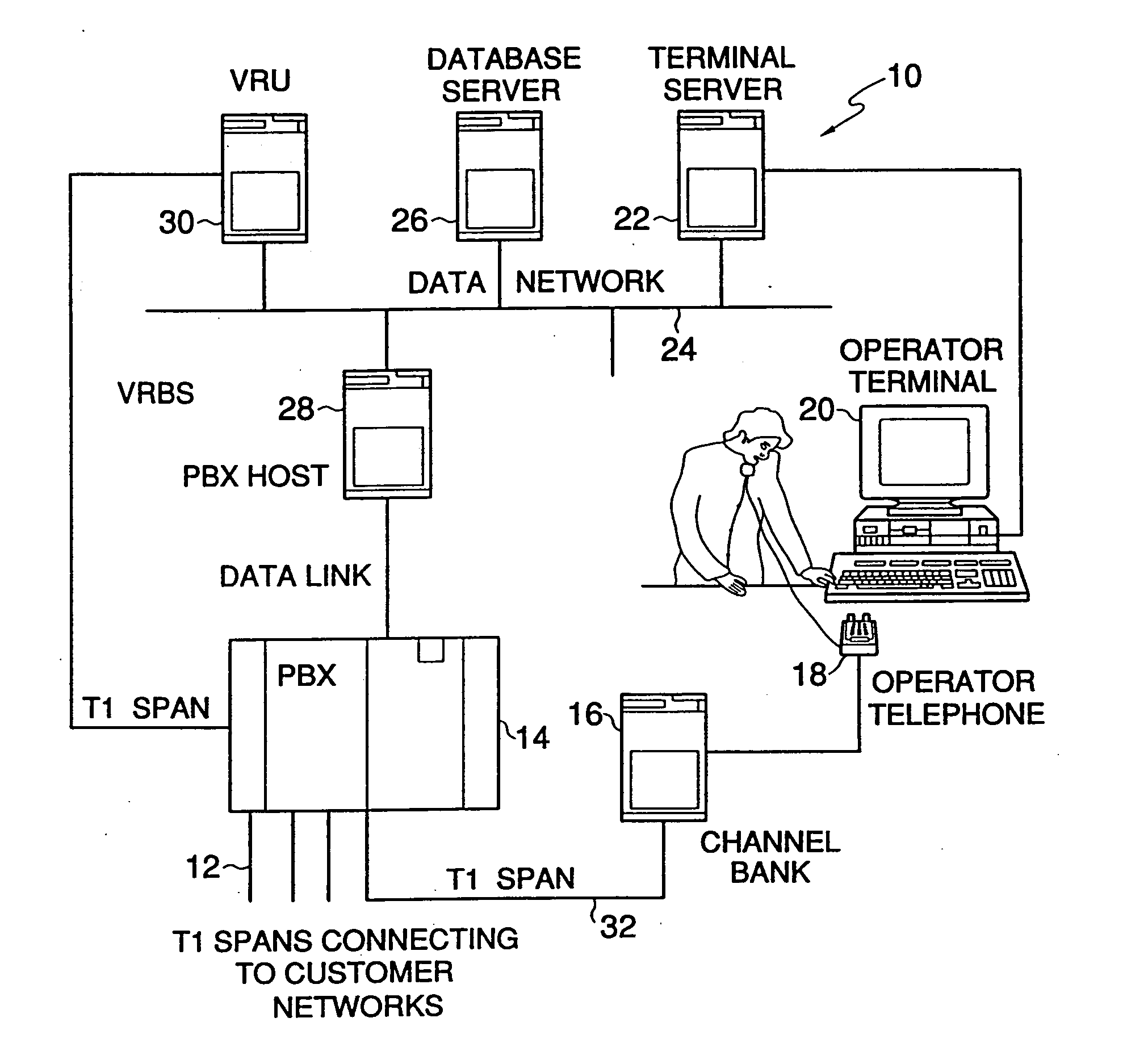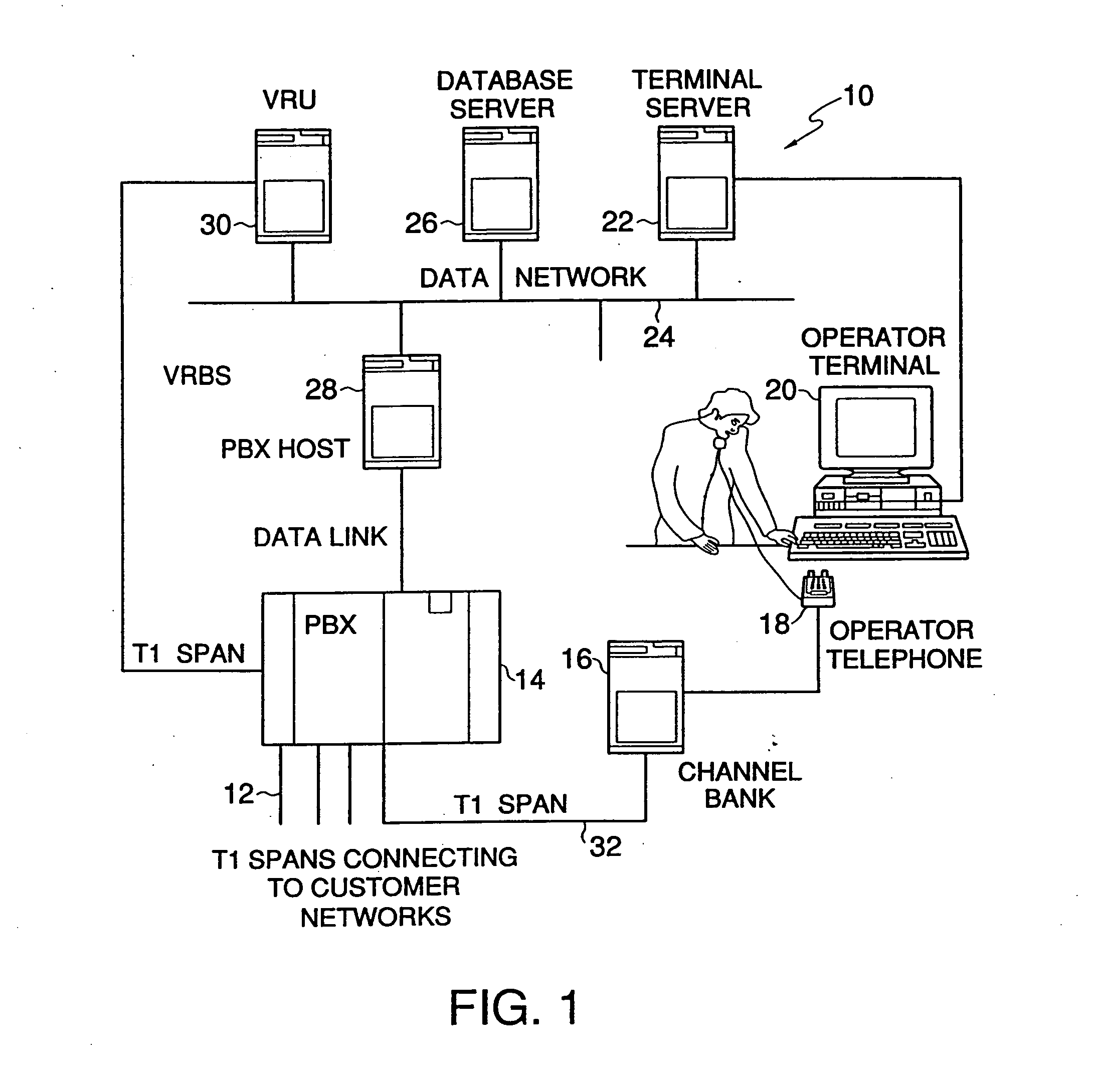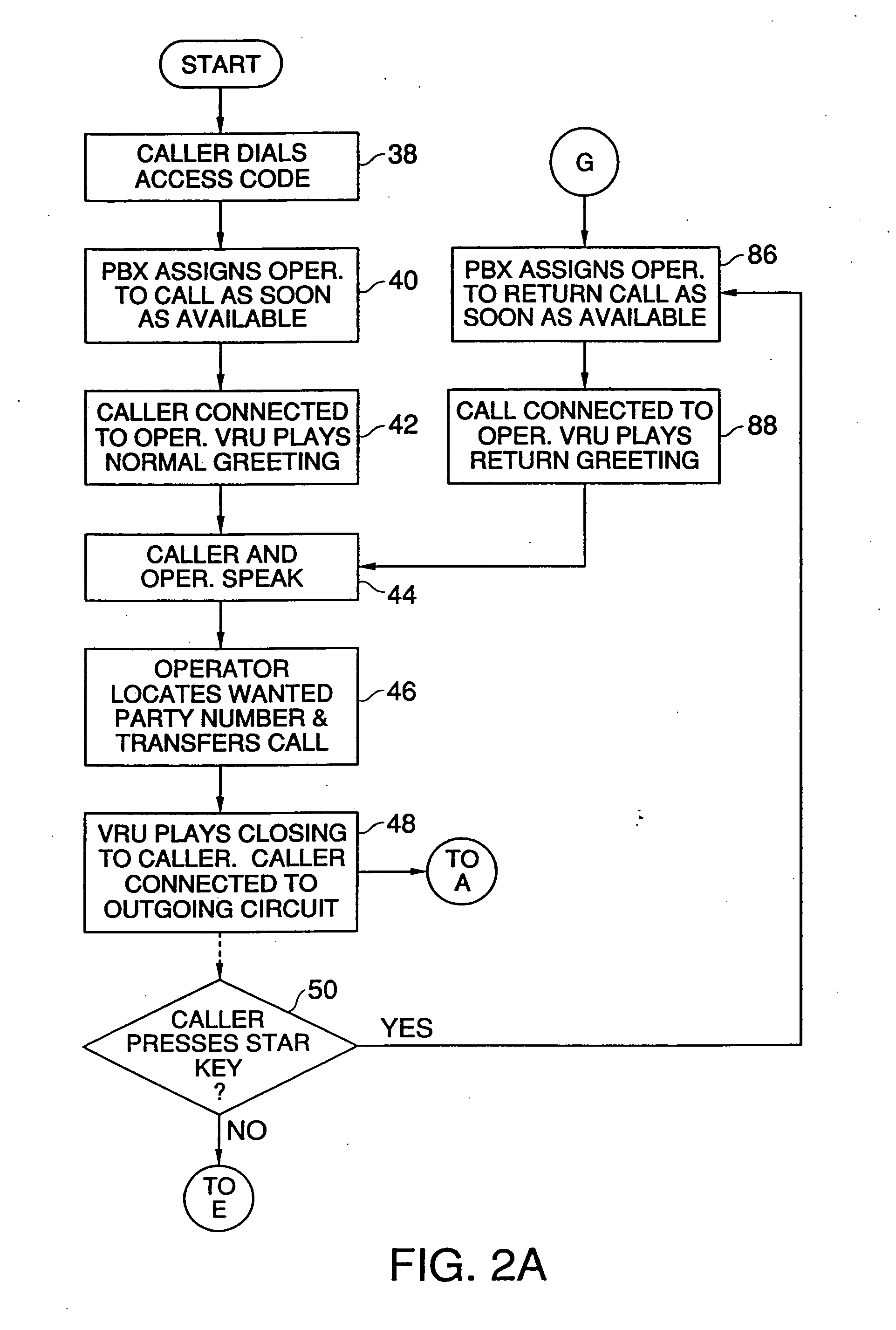Method and system for directory assistance services
a directory and service technology, applied in the field of directory assistance services, can solve the problems of inconvenient access to pencil and paper, poor suitability of system for many users, and inability to provide directory assistance services in time,
- Summary
- Abstract
- Description
- Claims
- Application Information
AI Technical Summary
Benefits of technology
Problems solved by technology
Method used
Image
Examples
Embodiment Construction
Overview of System
With reference to FIG. 1, a directory assistance center 10 according to a preferred embodiment of the present invention includes one or more T1 links 12 for connection to customer networks, a private branch exchange (PBX) 14, and a channel bank 16 for coupling to a plurality of operator telephones 18. Each operator is further equipped with a terminal 20 that includes a video display unit and a QWERTY keyboard with associated dialing pad. The operator terminals are coupled to a terminal server 22, which in turn is connected over a data network 24 to a database server 26. The data network further connects to a PBX host computer 28 and a voice response unit (VRU) 30. The data network consists of, but is not limited to, a Local Area Network (LAN) supplemented by a number of point-to-point serial data links.
The T1 links 12 provide connection between the directory assistance center 10 and the cellular carrier's switching center, through which incoming directory assi...
PUM
 Login to View More
Login to View More Abstract
Description
Claims
Application Information
 Login to View More
Login to View More - R&D
- Intellectual Property
- Life Sciences
- Materials
- Tech Scout
- Unparalleled Data Quality
- Higher Quality Content
- 60% Fewer Hallucinations
Browse by: Latest US Patents, China's latest patents, Technical Efficacy Thesaurus, Application Domain, Technology Topic, Popular Technical Reports.
© 2025 PatSnap. All rights reserved.Legal|Privacy policy|Modern Slavery Act Transparency Statement|Sitemap|About US| Contact US: help@patsnap.com



